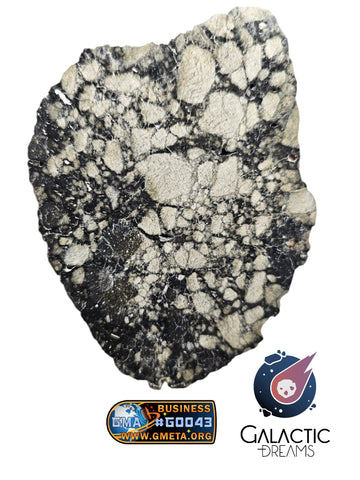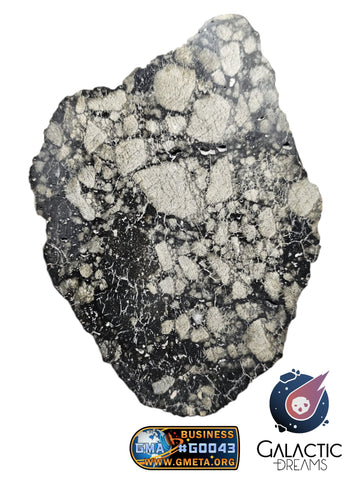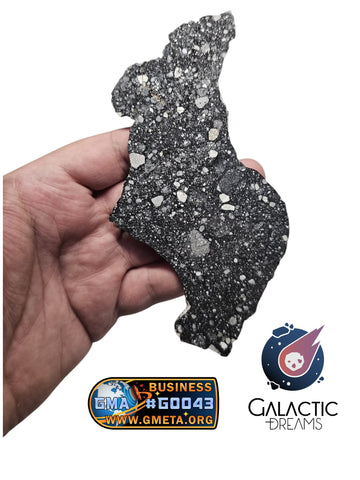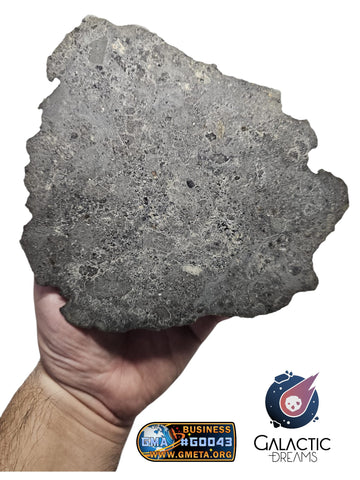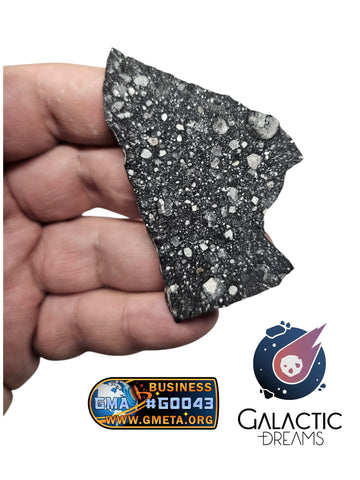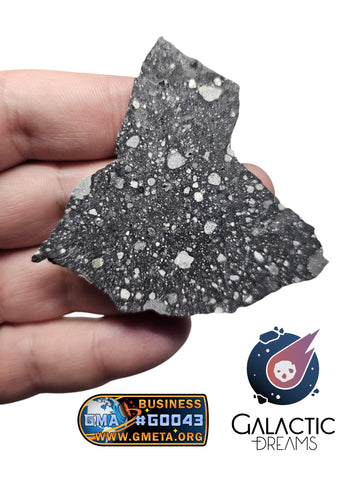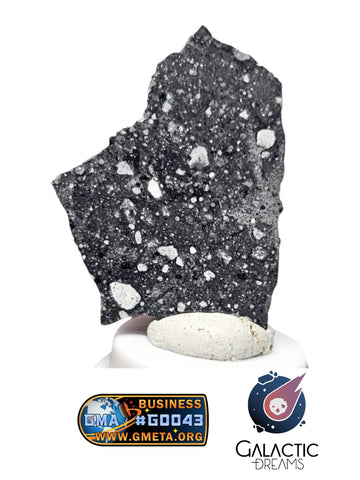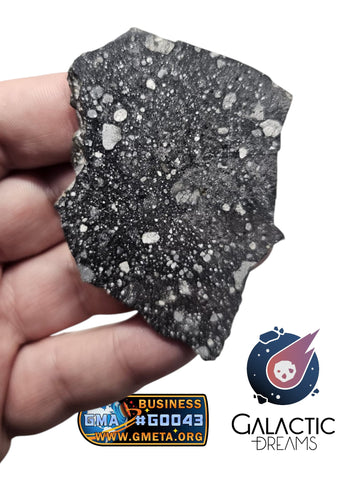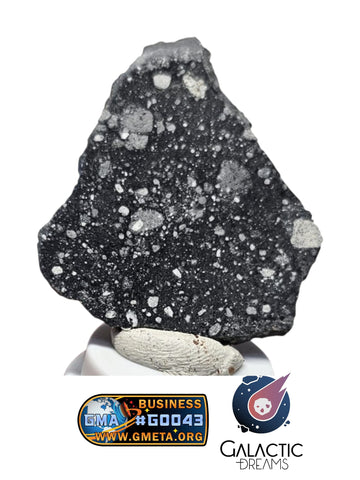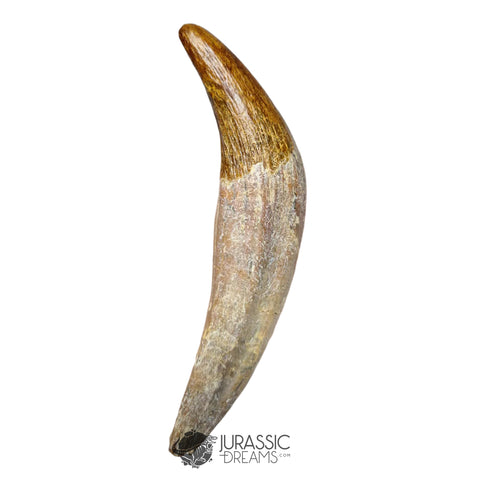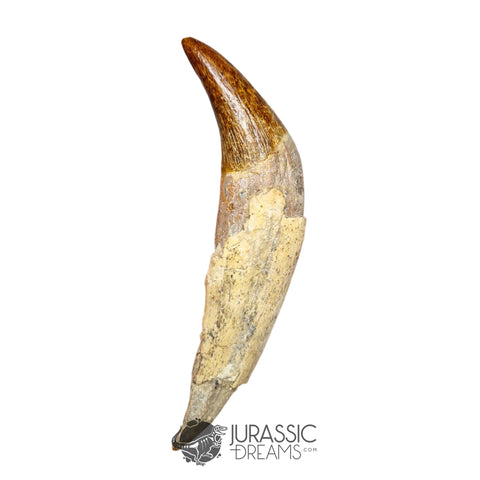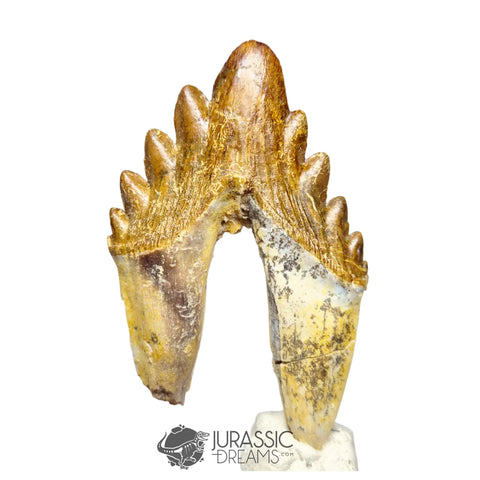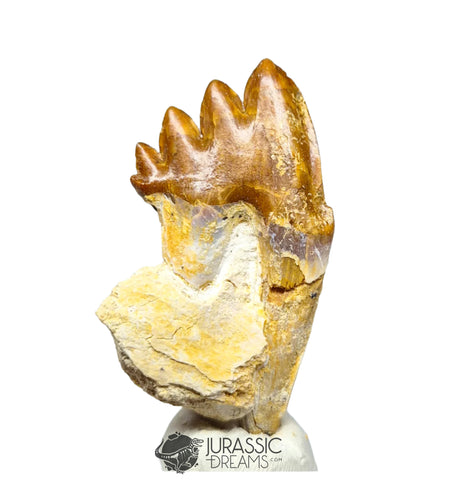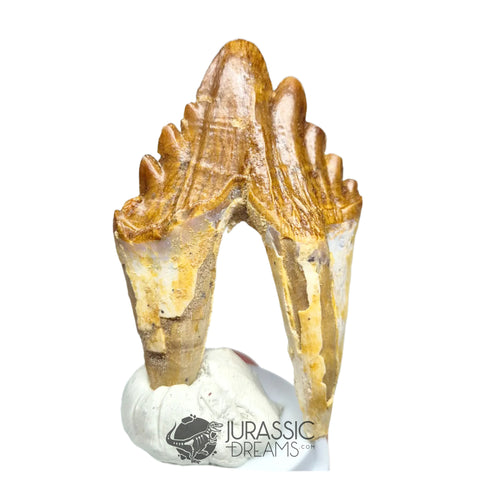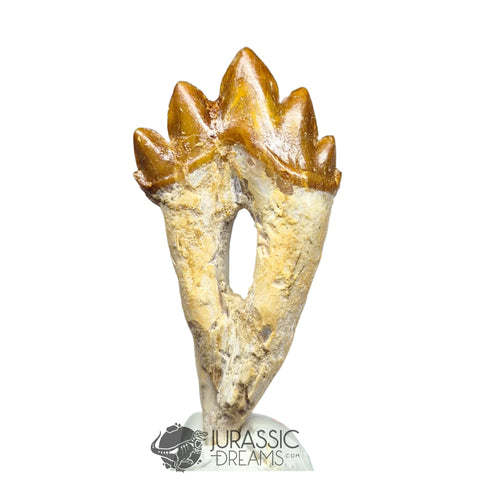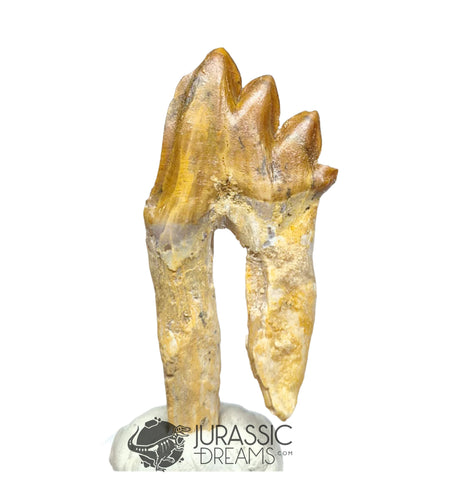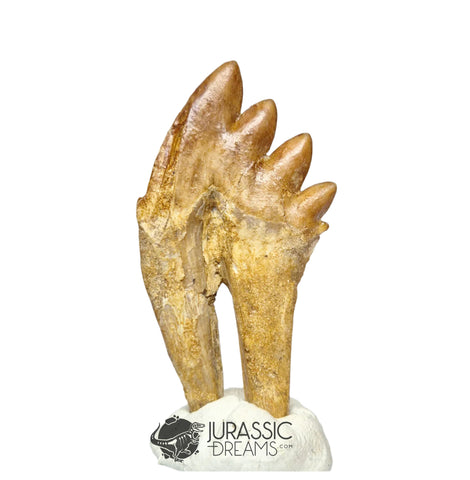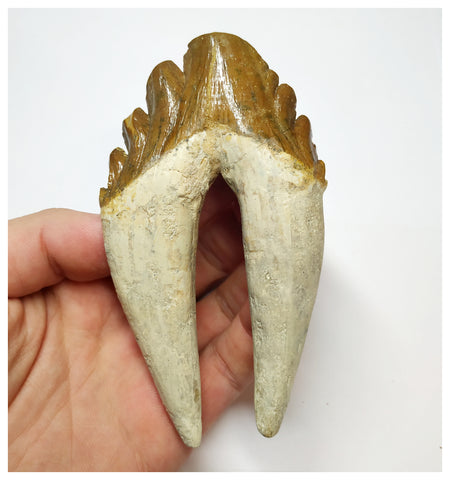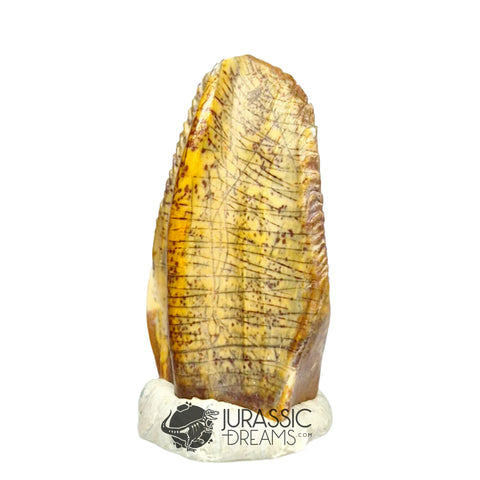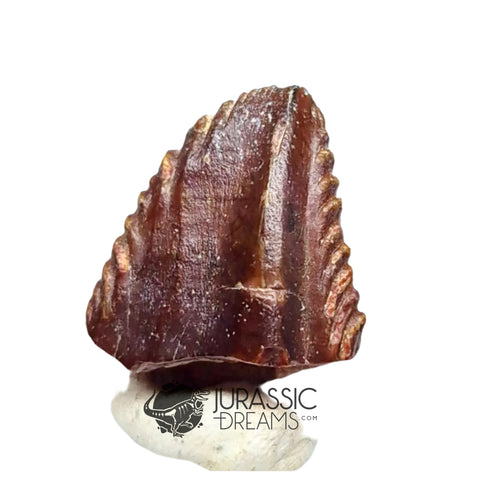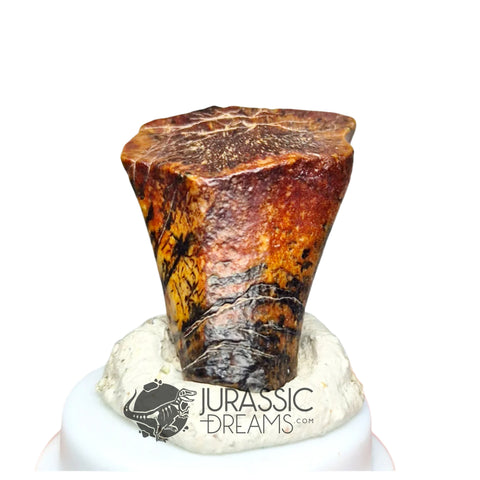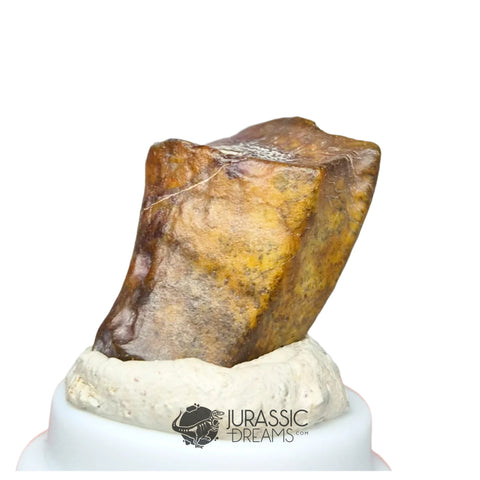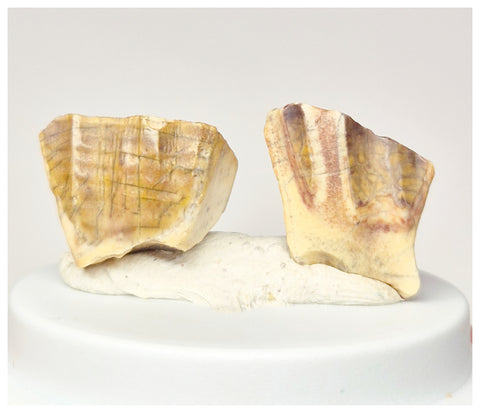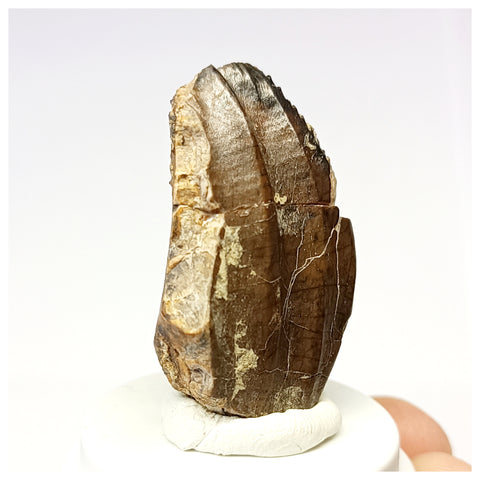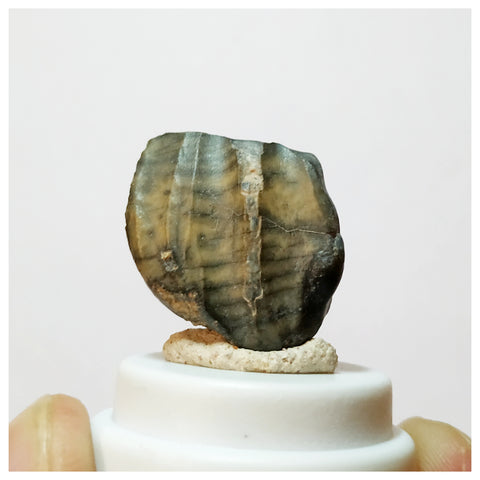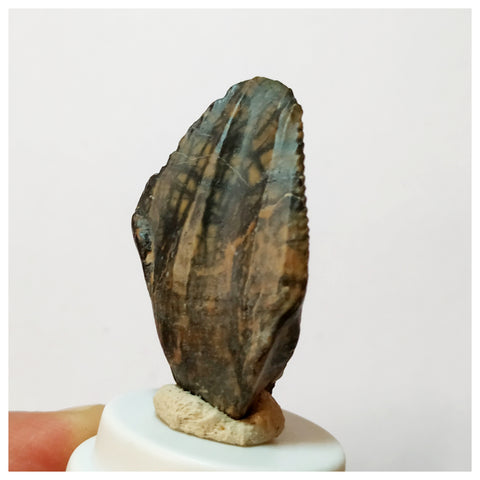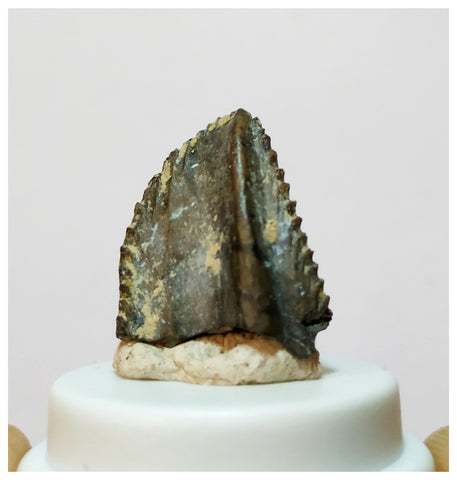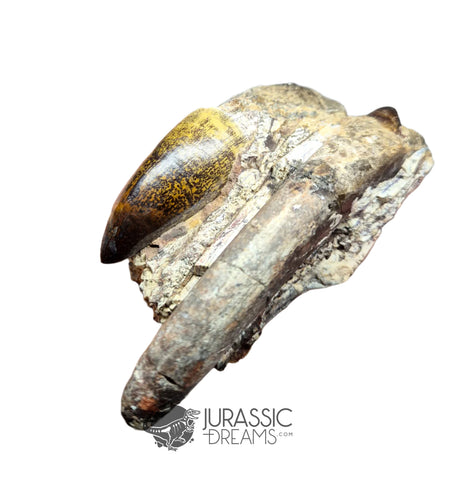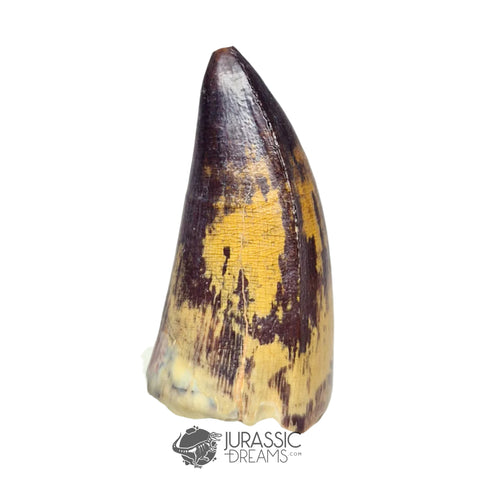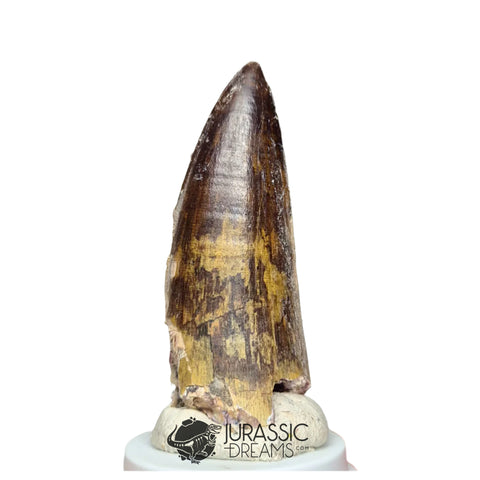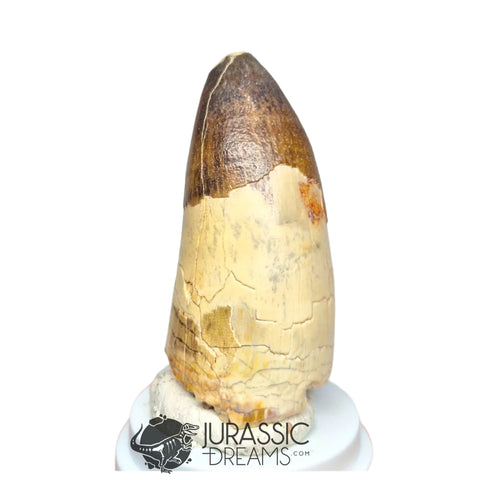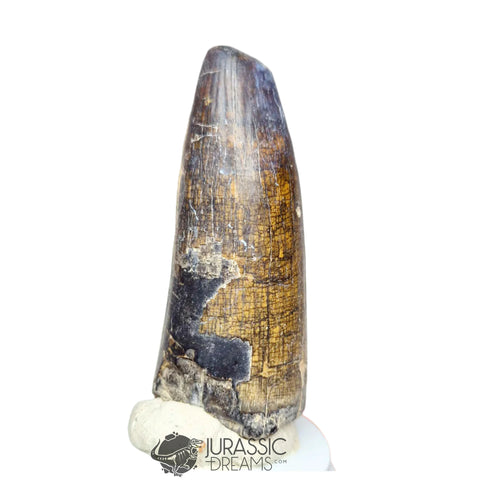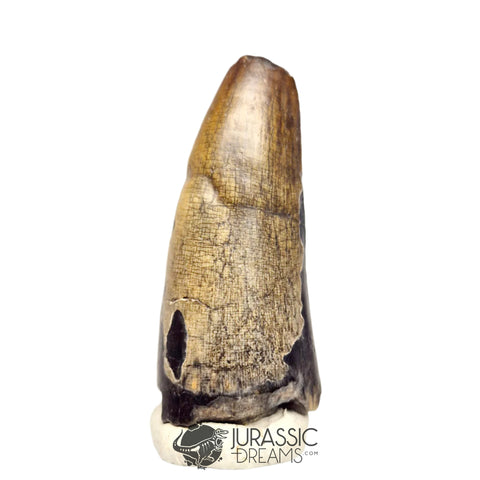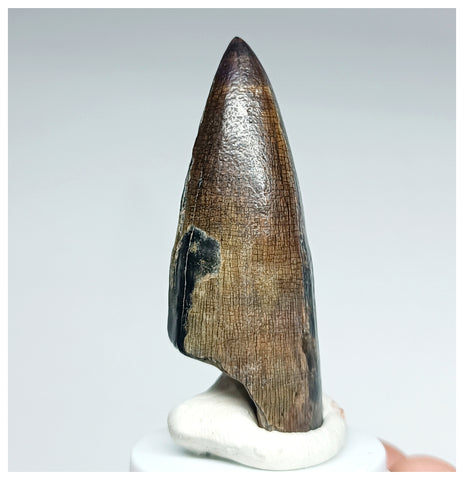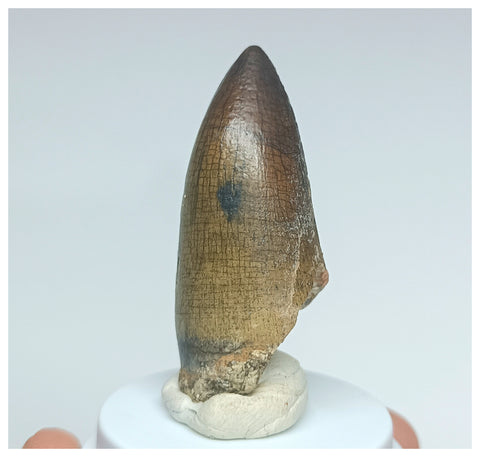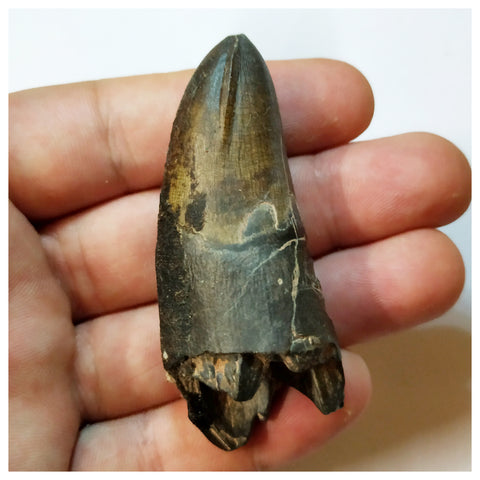This is one of our most special small claw of Pterosaurs. Despite being small, it features an outstanding preservation. It does not have any restoration or reparation. From its proximal zone until the tip, there are no fractures or imperfections. This type of specimens are extremely rare to find in the quarries. A single Pterosaur can provide many teeth to the fossil record, however only a few claws.
The texture and the color have beautiful orange tonalities. The claw has a very stylized morphology.
This is a piece worth of study and publication. Its stratigraphic origin is in the basal levels of the Ifezouane Formation, a few miles south-east of Ouzina, Errachidia province, South of Morocco.
The exact taxonomic classification is complex given that there are very few published studies that refer to the rests of the Pterosaurs in the North African Upper Cretaceous.
The genus, and even the family to which they belong, is somewhat complicated to ascertain. In this area of North Africa have been described remains mainly belonging to two families; Anhangueridae and Azharchidae. Others have also been described, but their remains are even rarer.
Diagnostic characteristics of pterosaur claws:
-Symmetrical vein grooves
-The bottom of the digit claw is flat.
-The bend at the end of the tip is a specific trait of Pterosaur claws: The tip shows a thin flange or ridge of bone on the very tip on the ventral edge. It could be considered an adaptation for the best grip when perching on steep surfaces. That flange aids in hooking on cliffs.
The rarity of discovering a specimen such amazing as this one, makes it worth considering it in the investment class.
The pterosaurs dentition rests in the Upper Cretaceous in North Africa are relatively common among the fauna which got preserved from those ecosystems around 100 million years ago. However, only two different pterosaur taxons have been described. Mader & Kellner (1999) (Full reference: B. J. Mader and A. W. A. Kellner. 1999. A new anhanguerid pterosaur from the Cretaceous of Morocco. Boletim do Museu Nacional - Geologia 45:1-11) described the Coloborhynchus moroccensis species, belonging to the Anhangueridae family, which lived at the middle of the Cretaceous (between the Albian and Cenomanian stages, about 105 million years ago). Remains have been discovered in Morocco. Another alternative combination in the nomenclature of this taxon is Siroccopteryx moroccensis.
Phylogeny: The descriptors of Siroccopteryx placed this genus in the family Anhangueridae, sensu Kellner. David Unwin, however, indicated in 2001 that it was a species of Coloborhynchus, then he called it as C. moroccensis and being a member of the Ornithocheiridae. This has been controversial. In the same year, Michael Festnacht suggested it was more similar to Anhanguera due to the wide end of the snout. In 2009, Kellner considered that Siroccopteryx, Coloborhynchus clavirostris and Uktenadactylus probably formed together a clade within Anhangueridae. [This last paragraph is from Wikipedia - License: Attribution-ShareAlike 3.0 Unported]
The type specimen is: LINHM 016, a partial skull (Anterior part of upper jaw with teeth). Its type locality is Beg'aa, west of Hamada du Guir, which is in a Cenomanian fluvial sandstone in the Kem Kem Formation of Morocco.
For more rigorous scientific information, see also Martill and Unwin 2011, Rodrigues and Kellner 2008, Unwin 2001 and Unwin 2003.
Despite the amount of teeth of this genus than have been discovered, there is still a lot to be discovered about the paleoecology of this flying piscivorous.
On the other hand, recently Ibreahim et al., 2010, described a new genus and species of pterosaur, belonging to the Azhdarchidae family, and found in the same fossiliferous locations of the Moroccan Cretaceous. This new species was named Alanqa saharahica. (Full reference: N. Ibrahim, D. M. Unwin, D. M. Martill, L. Baidder, and S. Zouhri. 2010. A new pterosaur (Pterodactyloidea: Azharchidae) from the Upper Cretaceous of Morocco. PLoS One 5(5):e10875)
The teeth and bones with strong and vivid fossilization colors such as red, orange and black come from small paleochannels composed by thin layers, in the intermediate and upper stratigraphic levels (Red Sandstone Beds), from the Aoufous Formation (Kem Kem Basin, South of Morocco). The lithology of this body of sediment is characterized by the dominance of sandstones (also known as arenites) and fluvial gravel, of siliceous nature. Sometimes large concentrations of iron oxide are present, and then a small sample of that is usually present at the base of the tooth. These mineralizations are responsible for the wide range of beautiful reddish color tones, slowly drawn during millions of years via fossil-diagenetic processes. The complicated sedimentarian architecture of the layers where most large vertebrates are found makes the excavation methodology a real challenge. Sometimes the local miners have to excavate long tunnels that follow the distribution of the fossiliferous layer.
The quarries in the red and yellow fossiliferous levels with sands are gravels (Aoufous Fm e Ifezouane Fm) are becoming more inaccessible and dangerous for the local miners. Therefore this type of teeth is everyday more scarce. The teeth which are found on the surface in nearby sites have a bad preservation due to the abrasion that they suffer during its exposition to high temperatures and aggressive desert climate conditions. However, the teeth that are extracted from the depth of the mines are usually much better preserved.
The different Geological Formations that make up the orography of the Cretaceous in the South East of Morocco have been mostly treated in an undifferentiated and not too accurate way by collectors, by Paleontology aficionados and by fossil dealers.
Historically, fossils dealers from all around the world have identified the dinosaur pieces from this sector as belonging to the Tegana Formation. However, in a formal way, most of the last published studies refer to other nomenclature in the description of the units and formations of the Lower and Upper Cretaceous.
That's why next we include an interesting link where the Aoufous Formation and the Ifezouane Formation are described, making reference to their age, geological history, sedimentology, stratigraphy and vertebrate assemblage. It includes a brief explanation of the stratigraphic concepts that have been established formally until today in the studies of this sector of Morocco.
This way, the precise stratigraphic understanding of the origin of the rests, as well as the sedimentological analysis, enables a better paleoecologic characterization of the environments where this amazing dinosaur assemblage lived.
https://en.wikipedia.org/wiki/Aoufous_Formation







